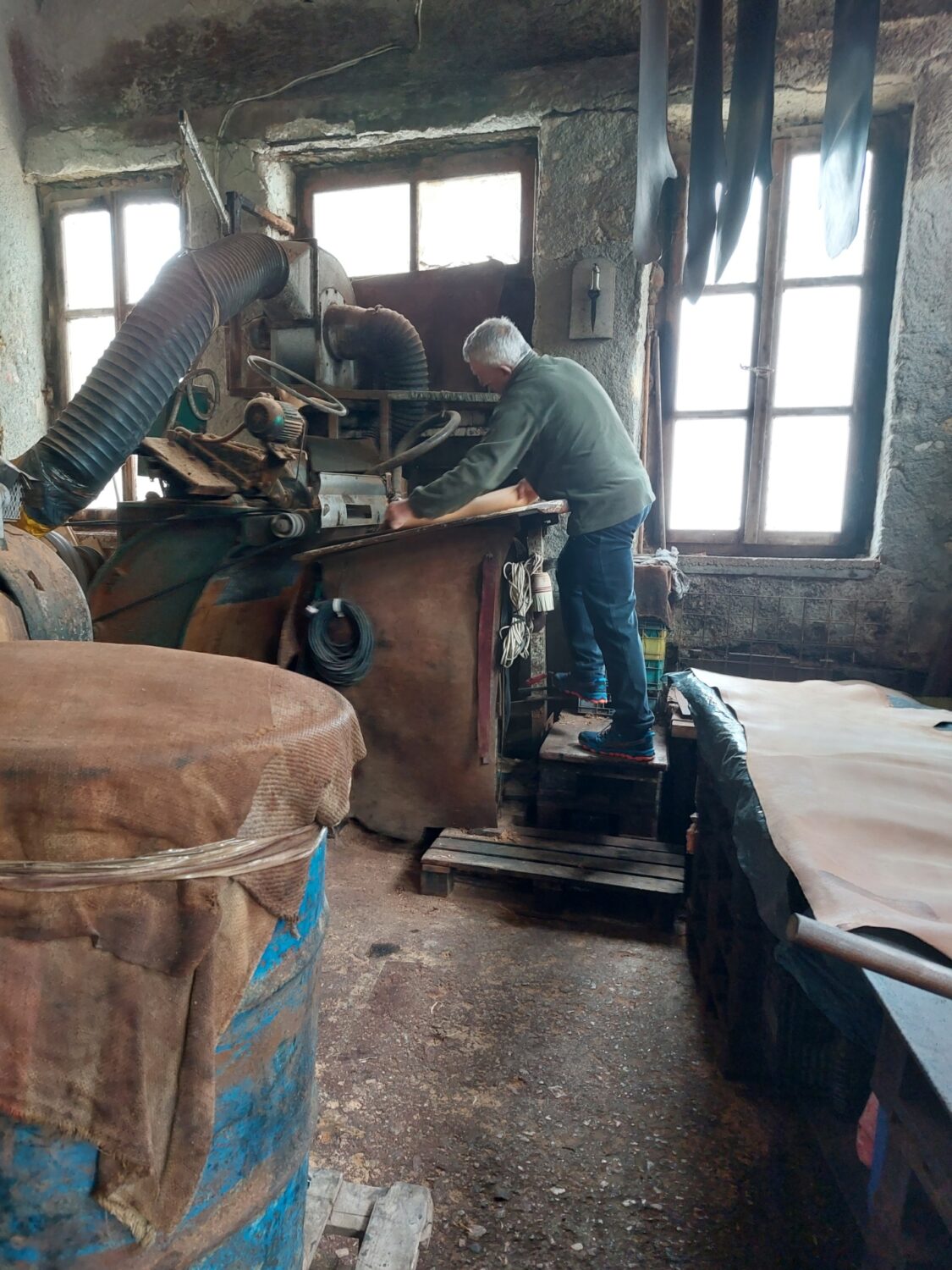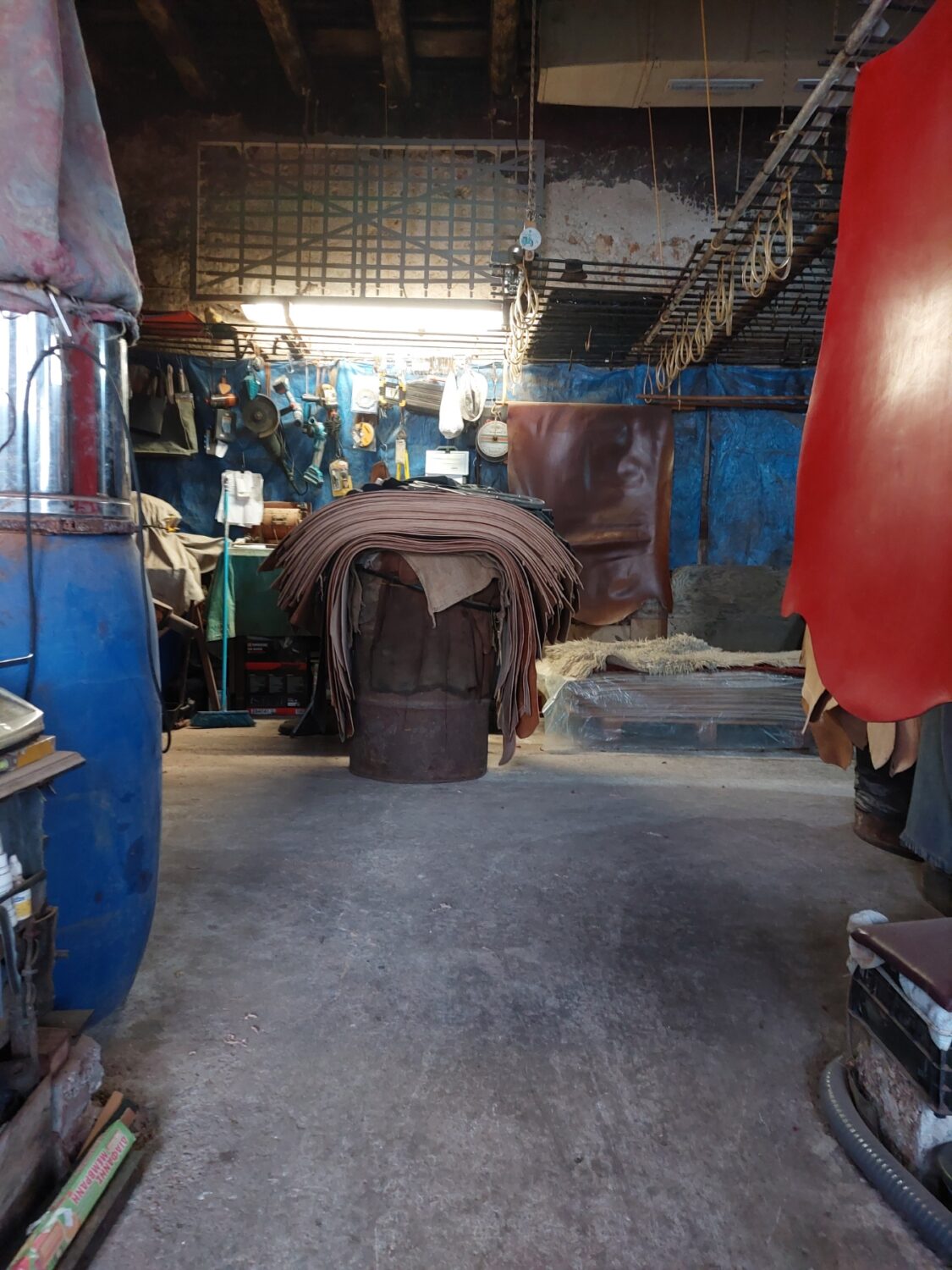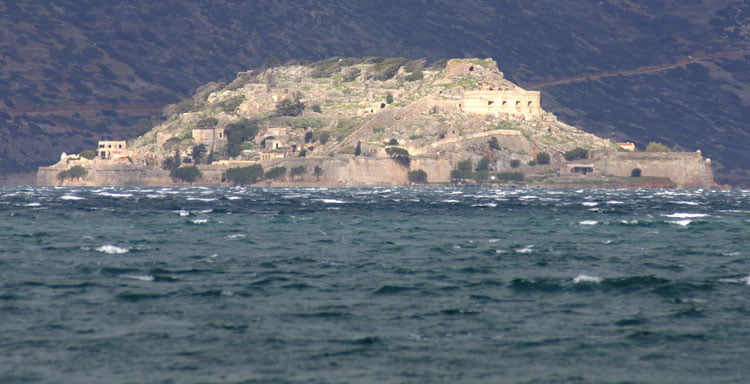The Anonymous U.N. Tanneries of Chania Crete

The rotating drums full of water, tannins and hides.
There seem to be so many people who have never even heard of the Tanneries of Chania.
The tanning process in Chania has remained unchanged over the years. The craftsmen use traditional techniques in the tanneries and specialise in tanning cow, goat and sheep hides. To start the process, it must soak the rawhide in water to remove dirt or impurities. They clean the skin, and then the tanners transform the rawhide into a soft and supple leather.
The first step in the tanning process is to treat the skin with a mixture of salt, water, and lime. This process helps to remove the hair from the hide and to neutralise any bacteria present in the skin. In the next stage, the skin is soaked in a solution of water and tannins. The tannins are extracted from the base of an acorn and are used to create the desired texture and colour of the leather.

The old machine that begins the hide finishing
The tanneries have provided employment opportunities for generations of skilled craftsmen, and their products were renowned all over the world. In 2018, the United Nations recognised these tanneries for their cultural significance and added them to the list of Intangible Cultural Heritage.
The tanning tradition in Chania dates back to the Ottoman occupation of the island, which began in the 1600s. The Venetian fortress, which was built in the 16th century, served as a protective barrier for the tanneries, which were located beneath its walls. This was done to prevent the wastewater from polluting the city’s water supply. Despite these challenges, the tanning industry thrived as the demand for leather goods grew.

Finally, thumping the hide to improve supplety.
Today, the tanneries continue to operate in a far less way than before, with only one or two tanneries left open.
The tanneries were an integral part of the city’s social and economic fabric. The craftsmen who worked there were highly skilled and had a deep understanding of the ancient techniques that were passed down through generations. The tanneries also provided employment for hundreds of people in the area and were an essential source of revenue for many local businesses.
The recognition of the tanneries by the United Nations is a significant achievement for the people of Chania. It is a testament to the importance of preserving cultural heritage and a reminder of the significant role that traditional industries can play in modern society. This recognition also serves as an acknowledgement of the city’s history and its significant contribution to the world of craftsmanship.
From now on, the challenge will be to balance the preservation of these ancient techniques with the demands of a modern economy.
In conclusion, the tanneries of Chania represented a rich cultural heritage that the United Nations has recognised. The industry played an essential role in the city’s history and economy, and preserving its memory for future generations is crucial.
The recognition by the UN is a significant step in this direction, and the challenge now is to ensure that the remaining tanneries remain relevant, competitive, and sustainable in a rapidly changing world. On the western side of Crete, Chania was once a bustling hub for tanneries, supplying leather goods across Europe. However, over the past few decades, the industry has seen a sharp decline, resulting in the closure of hundreds of tanneries, with only one remaining in operation as of 2023.
The industry boomed in the early 20th century, with over 200 tanneries operating in the city. However, as the demand for leather goods decreased and regulations tightened, the industry declined. Using synthetic materials and the emergence of low-cost labour markets in other countries also contributed to the downfall of the tanneries in Chania.
Despite being the last tannery in the district of Tabakaria, tanneries remain a true jewel that continues to keep the traditional art of leather production alive. The tannery has been passed down from generation to generation since its establishment in 1900, and its continued operation serves as a testament to the dedication and passion of the current owners.

Piles of finished hides
The tannery has become a popular tourist attraction, with visitors coming from far and wide to experience the traditional leather-making methods passed down for generations. Visitors can observe the process of leather-making first-hand or purchase some of the beautifully crafted products which are created on-site.
The tannery, however, faces several challenges as it operates in the modern era. One of the greatest challenges is the lack of interest from the younger generation in continuing the practice. The owners of the tannery have expressed concern about the future of their craft, as the younger generation is no longer interested in learning the art.
Increased competition from cheaper synthetic materials, which are readily available in the global market also threatened the future of the tannery. These synthetic materials cannot match the quality of authentic leather, but their low cost has made them an attractive alternative for many consumers.
In conclusion, the Tabakaria Tanneries are a testament to the beauty and strength of legacy industries. As the last remaining tannery in the district, it has become more than just a business but a symbol of tradition, innovation, and community. With a strong commitment to producing high-quality products and an entrepreneurial spirit, these craftsmen continue to inspire and amaze visitors from across the globe.
The tanneries are in the north-east of the city just east of Koum Kapi
Table of Contents
Visits: 134







